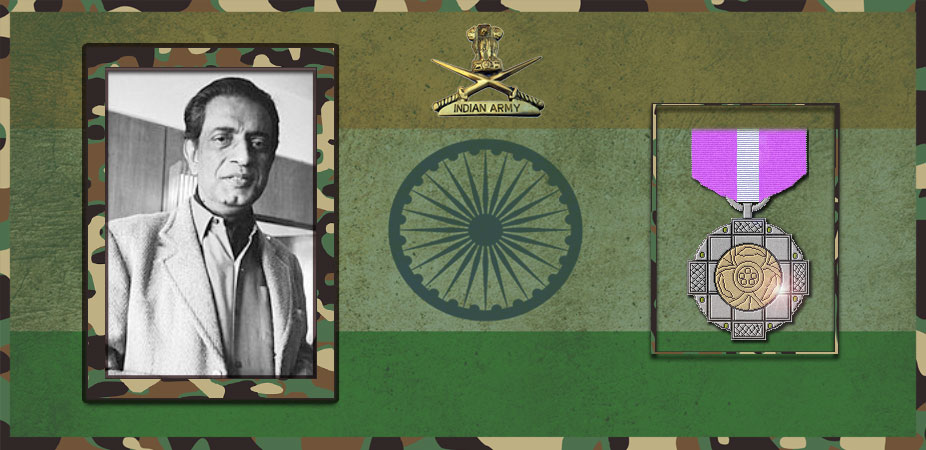Let's salute to our Indian Army together, We are proud to be Indian.
Let's salute to our Indian Army together, We are proud to be Indian.

Satyajit Ray (Bengali: [ˈʃɔt̪ːodʒit̪ ˈrai̯] ( listen); 2 May 1921 – 23 April 1992) was an Indian filmmaker, screenwriter, graphic artist, music composer and author, widely regarded as one of the greatest filmmakers of the 20th century. Ray was born in the city of Calcuttainto a Bengali Brahmo family of Bengali Kayastha origin which was prominent in the field of arts and literature. Starting his career as a commercial artist, Ray was drawn into independent filmmaking after meeting French filmmaker Jean Renoir and viewing Vittorio De Sica’s Italian neorealist film Bicycle Thieves (1948) during a visit to London.
Ray directed 36 films, including feature films, documentaries and shorts. He was also a fiction writer, publisher, illustrator, calligrapher, music composer, graphic designer and film critic. He authored several short stories and novels, meant primarily for young children and teenagers. Feluda, the sleuth, and Professor Shonku, the scientist in his science fiction stories, are popular fictional characters created by him. He was awarded an honorary degree by Oxford University.
Ray’s first film, Pather Panchali (1955), won eleven international prizes, including the inaugural Best Human Document award at the 1956 Cannes Film Festival. This film, along with Aparajito (1956), and Apur Sansar (The World of Apu) (1959) form The Apu Trilogy. Ray did the scripting, casting, scoring, and editing, and designed his own credit titles and publicity material. Ray received many major awards in his career, including 32 Indian National Film Awards, a Golden Lion, a Golden Bear, 2 Silver Bears, a number of additional awards at international film festivals and award ceremonies, and an Academy Honorary Award in 1992. The Government of India honored him with the Bharat Ratna, its highest civilian award, in 1992.
Satyajit Ray’s ancestry can be traced back for at least ten generations.Ray’s grandfather, Upendrakishore Ray was a writer, illustrator, philosopher, publisher, amateur astronomer and a leader of the Brahmo Samaj, a religious and social movement in nineteenth century Bengal. He also set up a printing press by the name of U. Ray and Sons, which formed a crucial backdrop to Satyajit’s life. Sukumar Ray, Upendrakishore’s son and father of Satyajit, was a pioneering Bengali writer of nonsense rhyme (Abol tabol) and children’s literature, an illustrator and a critic. Ray was born to Sukumar and Suprabha Ray in Calcutta.
Satyajit Ray’s family had acquired the name ‘Ray’ (originally ‘Rai’) from the Mughals. Although they were Bengali Kayasthas, the Rays were ‘Vaishnavas’ (worshippers of Vishnu) as against majority Bengali Kayasthas who were ‘Shaktos’ (worshippers of Shiva).
Sukumar Ray died when Satyajit was barely three, and the family survived on Suprabha Ray’s meager income. Ray studied at Ballygunge Government High School, Calcutta, and completed his BA in economics at Presidency College, Calcutta then affiliated with the University of Calcutta, though his interest was always in fine arts. In 1940, his mother insisted that he study at the Visva-Bharati University at Santiniketan, founded by Rabindranath Tagore. Ray was reluctant due to his love of Calcutta, and the low opinion of the intellectual life at Santiniketan His mother’s persuasion and his respect for Tagore finally convinced him to try. In Santiniketan, Ray came to appreciate Oriental art. He later admitted that he learned much from the famous painters Nandalal Bose and Benode Behari Mukherjee. Later he produced a documentary film, The Inner Eye, about Mukherjee. His visits to Ajanta, Ellora and Elephanta stimulated his admiration for Indian art.
Ray received many awards, including 32 National Film Awards by the Government of India, and awards at international film festivals. At the 11th Moscow International Film Festival in 1979, he was awarded with the Honorable Prize for the contribution to cinema. At the Berlin International Film Festival, he was one of only four filmmakers to win the Silver Bear for Best Director more than once and holds the record for the most number of Golden Bear nominations, with seven. At the Venice Film Festival, where he had previously won a Golden Lion for Aparajito (1956), he was awarded the Golden Lion Honorary Award in 1982. That same year, he received an honorary “Hommage a Satyajit Ray” award at the 1982 Cannes Film Festival.
Ray is the second film personality after Chaplin to have been awarded an honorary doctorate by Oxford University. He was awarded the Dadasaheb Phalke Award in 1985 and the Legion of Honor by the President of France in 1987.
The Government of India awarded him the Padma Bhushan in 1965 and the highest civilian honour, Bharat Ratna, shortly before his death. The Academy of Motion Picture Arts and Sciences awarded Ray an Honorary Oscar in 1992 for Lifetime Achievement. It was one of his favourite actresses, Audrey Hepburn, who represented the Academy on that day in Calcutta. Ray, unable to attend the ceremony due to his illness, gave his acceptance speech to the Academy via live video feed from the hospital bed. In 1992 he was posthumously awarded the Akira Kurosawa Award for Lifetime Achievement in Directing at the San Francisco International Film Festival; it was accepted on his behalf by actress Sharmila Tagore.
In 1992, the Sight & Sound Critics’ Top Ten Poll ranked Ray at No. 7 in its list of “Top 10 Directors” of all time, making him the highest-ranking Asian filmmaker in the poll. In 2002, the Sight & Sound critics’ and directors’ poll ranked Ray at No. 22 in its list of all-time greatest directors,thus making him the fourth highest-ranking Asian filmmaker in the poll. In 1996, Entertainment Weekly magazine ranked Ray at No. 25 in its “50 Greatest Directors” list.In 2007, Total Film magazine included Ray in its “100 Greatest Film Directors Ever” list.